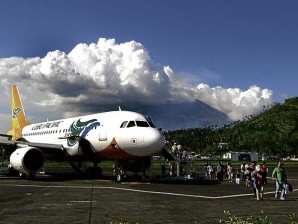Cebu Pac corners 45 percent of domestic market
THERE’S no denying that budget airlines have fueled the growth of air travel in the country.
A decade ago, taking the plane was the sole province of the rich. Today, a high-level corporate executive could be sitting in the same row as a household helper on a flight to Cebu and no one would give a second glance.
Article continues after this advertisementGovernment data on air traffic show just how much the industry has changed since the entry of budget carriers in the middle of the last decade.
In 2006, flag carrier Philippine Airlines (PAL) was the undisputed leader in domestic travel with over 3.8 million passengers, giving it a healthy market share of 45 percent. Domestic air passengers for the year totaled 8.47 million.
In 2011, the number of domestic passengers who traveled by air in the country rose to 18.76 million, up 122 percent from 2006, data from the Civil Aeronautics Board show.
Article continues after this advertisementIn contrast, PAL’s domestic passenger base expanded by only 13 percent.
PAL’s market share has shrunk to 23 percent, while Cebu Pacific now corners 45 percent (up from 35 percent in 2006), with 8.44 million domestic passengers flown last year.
The number of passengers that the country’s low-cost carriers or LCCs have carried has been rising steadily.
Cebu Pacific, for instance, posted a growth of 46 percent in 2007, 20.46 percent in 2008, 34.71 percent in 2009, 10.36 percent in 2010, and 6.18 percent in 2011.
On the other hand, PAL saw its annual domestic passenger numbers drop in 2010 and 2011 by 12.16 percent and 18.81 percent, respectively.
Even the PAL group recognized the potential of low-cost carriers. Its affiliate, now named AirPhil Express, cornered 11.44 percent of the market in 2006. Last year, AirPhil Express had a market share of 20 percent in domestic traffic—nearly making up for what PAL lost.
Zest Airways, owned by Zest-O juice drink founder Alfred Yao, had less than 5 percent of the market in 2006 but cornered 11 percent in 2011 after serving 2.15 million passengers.
On the international front, the shift is even more pronounced. In 2006, PAL enjoyed a virtual monopoly of international passenger traffic carried by local airlines. The flag carrier carried 3.05 million passengers that year, roughly a third of the total of 9.73 million passengers, inclusive of traffic that went to foreign airlines with operations in the Philippines.
That year, only two other local carriers had international operations. Cebu Pacific flew 429,522 passengers in 2006, while Zest Airways had under 6,000 passengers.
In 2011, there were six local airlines with operating international routes. PAL remained the leader in international traffic with 3.90 million passengers last year, but this was notably down from 3.93 million in 2010.
Cebu Pacific, however, flew 2.46 million passengers for the year, more than five times its international volume in 2006.
Counting only the international traffic handled by local airlines, which totaled 6.96 million in 2011, PAL had a market share of 56 percent, Cebu Pacific had 35 percent, Zest Airways had 3.12 percent, Southeast Asian Airlines (Seair) had 3.01 percent, and AirPhil Express had 2 percent.
Niche player Spirit de Manila Airlines had a market share of 0.6 percent.
(Paolo G. Montecillo is an Inquirer reporter covering the transportation and communication beat.)
















